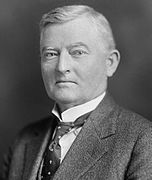| ||||||||||||||||||||||||||||||||||||||||||||||||||||||||||||||
11 (out of 435) seats in the U.S. House of Representatives 218 seats needed for a majority | ||||||||||||||||||||||||||||||||||||||||||||||||||||||||||||||
|---|---|---|---|---|---|---|---|---|---|---|---|---|---|---|---|---|---|---|---|---|---|---|---|---|---|---|---|---|---|---|---|---|---|---|---|---|---|---|---|---|---|---|---|---|---|---|---|---|---|---|---|---|---|---|---|---|---|---|---|---|---|---|
| ||||||||||||||||||||||||||||||||||||||||||||||||||||||||||||||
There were special elections to the United States House of Representatives in 1931 to the 71st United States Congress and 72nd United States Congress. After the 1930 House elections, the Republicans held a narrow majority of 218 seats, the smallest possible majority in congress. However, following these elections, the Democrats gained 3 seats resulting in a Democratic House majority. This Democratic majority was only further increased in the 1932 house elections and would survive for 63 years, with the Republicans only briefly holding the House following the 1946 and 1952 House elections. Republicans would only hold House control for a significant amount of time following the Republican Revolution of 1994.
Cite error: There are <ref group=lower-alpha> tags or {{efn}} templates on this page, but the references will not show without a {{reflist|group=lower-alpha}} template or {{notelist}} template (see the help page).

